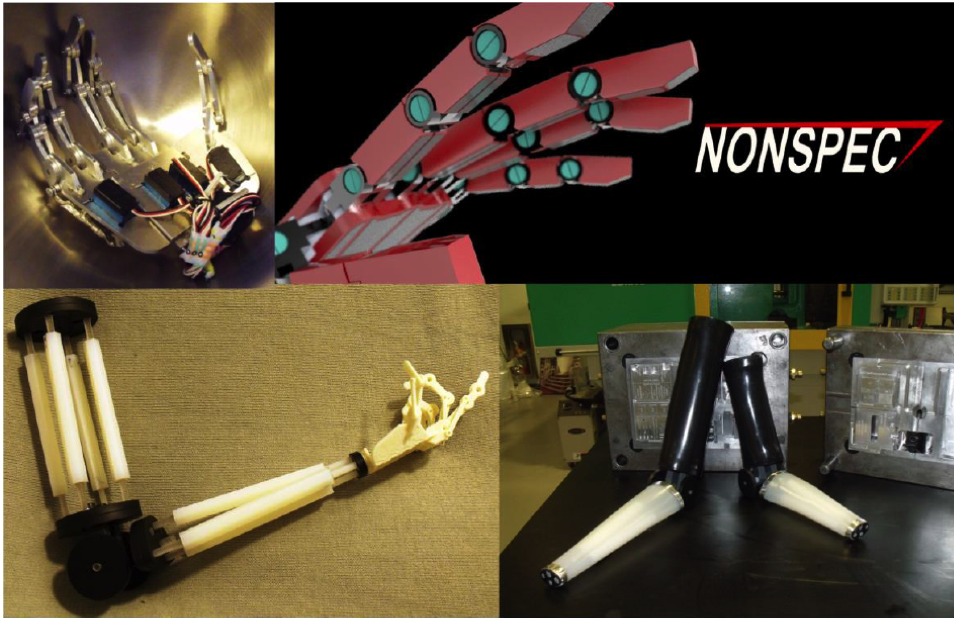Goals of the project
Nonspec’s goal is to design and develop a low cost durable prosthetic for developing countries. Throughout development, the project was made with a direct to manufacturing profile in mind. This means that the entire design was developed to be injection moldable providing economies of scale to the final product. Currently the team is moving into early clinical evaluations with a device that is under 5 dollars in material to produce, which is currently unprecedented on the market.
Nature of the Collaboration
The concept started as a mechanical hand capstone project on a budget. After the capstone was complete, the team was revamped and the project was developed to include an entire upper limb. The team competed in the first DifferenceMaker competition (in which we were awarded our first funds by alumni. From then on we have worked to make Nonspec a reality.
Skills
Design – designing for manufacturing process, medical device design, software modeling, and digital testing
Machining – prototyping as well as producing trial-ready devices
Manufacturing – injection molding is in our future
Math – in designing for stresses on functioning and moving parts
Tools
3D printers, laser cutters, CNCs, and thermoforming equipment were used to prototype different segments of our device in different stages. For example, we heated up plastics sheets to prototype our foot design and formed them to shape using basic supplies from the hardware store. Our ankle prototype was 3D printed and our original plastic hand was laser cut out of the same sheeting we used for our foot.
Process
Our process was to over design with lofty goals, then simplify, reuse parts, and through heavy market research dwindle our device to a minimal viable product. Every step along the way has led us to many features that we would love to incorporate into our design, and for the best ones we have planned to incorporate them during scale up, but we chose to focus on our core technology to get it off the ground.
Milestones
Our major milestones were in market validation (achieved by having conversations with key players and having our business and technical designs analyzed by prestigious professionals in various fields) and in prototyping various parts of our design.
Challenges encountered
Our team encountered time management and focus issues. We were trying to “bite off more than we could chew” and many members couldn’t keep up with the high work demand. It was rough to part ways in the work environment with friends, but we realized that it is necessary to only maintain members on the team who fill a void with their skills and resources.
Major outcomes
We have been able to raise over $100,000 in no-strings-attached money which is allowing us to begin our human trials in India this January, closely followed by trials in Bolivia and local Massachusetts hospitals.
Innovations, impact and successes
Our major innovation for this project is a patent pending core technology that allows for a “growing” prosthetic limb. With our simple device, the same limb can be adjusted to fit both and 8 year old and 18 year old.
 Jonathan de Alderete
Jonathan de Alderete
 Erin Keaney
Erin Keaney
 Brendan Donoghue
Brendan Donoghue
